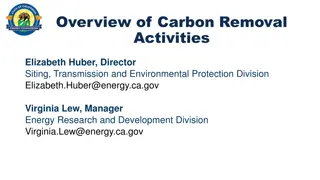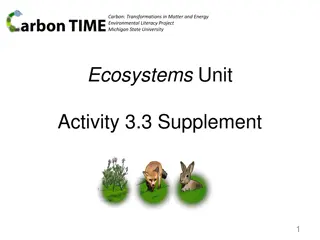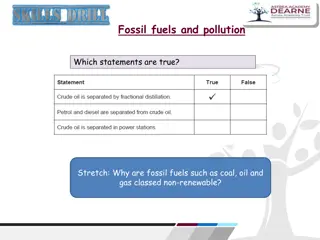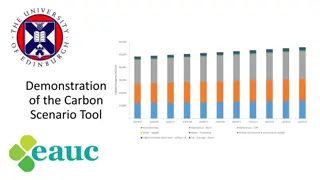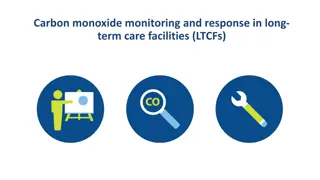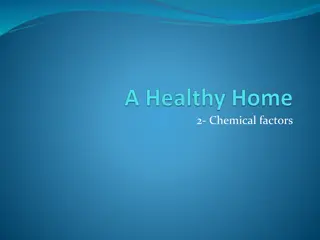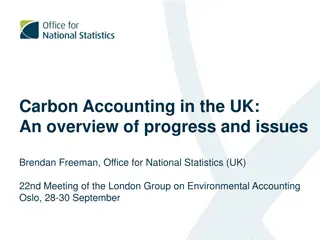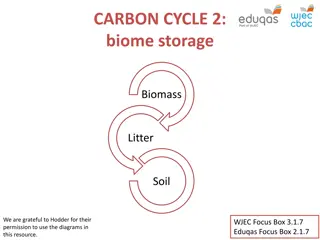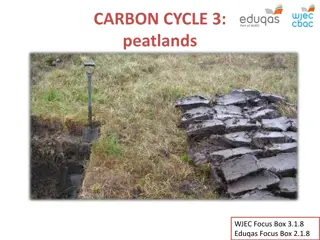Carbon Monoxide
Carbon monoxide (CO) is a colorless, odorless, toxic gas that poses severe health hazards, including asphyxiation and death. Exposure levels, symptoms of poisoning, and proper emergency response measures are discussed in detail.
Download Presentation

Please find below an Image/Link to download the presentation.
The content on the website is provided AS IS for your information and personal use only. It may not be sold, licensed, or shared on other websites without obtaining consent from the author.If you encounter any issues during the download, it is possible that the publisher has removed the file from their server.
You are allowed to download the files provided on this website for personal or commercial use, subject to the condition that they are used lawfully. All files are the property of their respective owners.
The content on the website is provided AS IS for your information and personal use only. It may not be sold, licensed, or shared on other websites without obtaining consent from the author.
E N D
Presentation Transcript
Carbon Monoxide 3/2/2025 Bureau of Fire Prevention 1
Carbon Monoxide (CO) CO is a colorless, odorless, tasteless, non-irritating, toxic gas. CO is a natural by-product of incomplete combustion from fuels such as (gasoline, wood, coal, propane, oil and methane). 3/2/2025 Bureau of Fire Prevention 2
Carbon Monoxide (CO) Virtually undetectable without special instruments CO has a vapor density which makes it slightly lighter than air (.968). Since warm air rises, CO rises with it. E.g. air from a furnace, hot water heater, or a fire. Once this emitted air cools to room temperature, CO will disperse evenly through the room. 3/2/2025 Bureau of Fire Prevention 3
Health Hazards CO can kill before its presence is known Provides no early warning signs. Displaces O2 in bloodstream and asphyxiates victim. Highly toxic. 3/2/2025 Bureau of Fire Prevention 4
CO Exposure Levels 0-9 ppm CO: no health risk; normal CO levels in air 10-29 ppm CO: problems over long-term exposure; chronic problems such as headaches, nausea. ... 100+ ppm CO: severe symptoms; confusion, intense headaches; ultimately brain damage, coma, and/or death, especially at levels 300-400+ ppm. 3/2/2025 Bureau of Fire Prevention 5
Symptoms of CO Poisoning Low Level CO Poisoning- can mimic flu symptoms, headache (mild/severe), fatigue, nausea, dizziness, confusion, irritability. Medium Level CO Poisoning- vomiting, drowsiness, loss of consciousness. High Level CO Poisoning- seizure, coma, permanent brain damage, death. 3/2/2025 Bureau of Fire Prevention 6
FDNY Response FDNY Response Are any individuals exhibiting symptoms of CO poisoning? If so immediately evacuate the affected area, ventilate, and request EMS to respond. 3/2/2025 Bureau of Fire Prevention 7
FDNY Response FDNY Response Using a CO meter, take an initial reading at the front door of premises, then continue investigation to find source of CO in premises. 3/2/2025 Bureau of Fire Prevention 8
FDNY Response FDNY Response The Incident Commander (IC) shall request the utility company to respond if: CO level over 9 PPM is recorded by a meter. Units on the scene shut off a gas appliance. An individual(s) is exhibiting symptoms of CO poisoning. The IC feels a response by the utility company is required. 3/2/2025 Bureau of Fire Prevention 9
Meter readings of 9 PPM or less Inform occupant that our meter has not detected an elevated CO level. Attempt to reset detector. Inform occupants that if detector activates again that they should again call 911 to notify the Fire Department. 3/2/2025 Bureau of Fire Prevention 10
Meter readings of 9 PPM but less than 100 PPM Readings of greater than 9 PPM shall not be considered normal. Inform occupants that they have a potentially dangerous level of CO. Recommend that all persons leave the affected area and begin ventilation. If it is determined that an appliance is malfunctioning and thereby producing CO, it should be shut down. 3/2/2025 Bureau of Fire Prevention 11
Meter readings 9 PPM but less than 100 PPM (cont.) Once the faulty appliance is shut down and ventilation has reduced the CO level to 9 PPM or less the premises may be reoccupied. Attempt to reset the detector Inform the occupant of all actions taken and that the utility company has been requested to respond. 3/2/2025 Bureau of Fire Prevention 12
Meter readings of 100 PPM and Greater Inform occupants that we have detected a potentially lethal level of CO. Begin evacuation of the affected area and ventilate. If a malfunction appliance is found producing CO it should be shut down. Once the source of CO has been mitigated and the level of CO reduced to 9 PPM or less the area may be reoccupied. Attempt to reset the detector Inform occupants of the actions taken, and that the utility company has been requested to respond. 3/2/2025 Bureau of Fire Prevention 13




